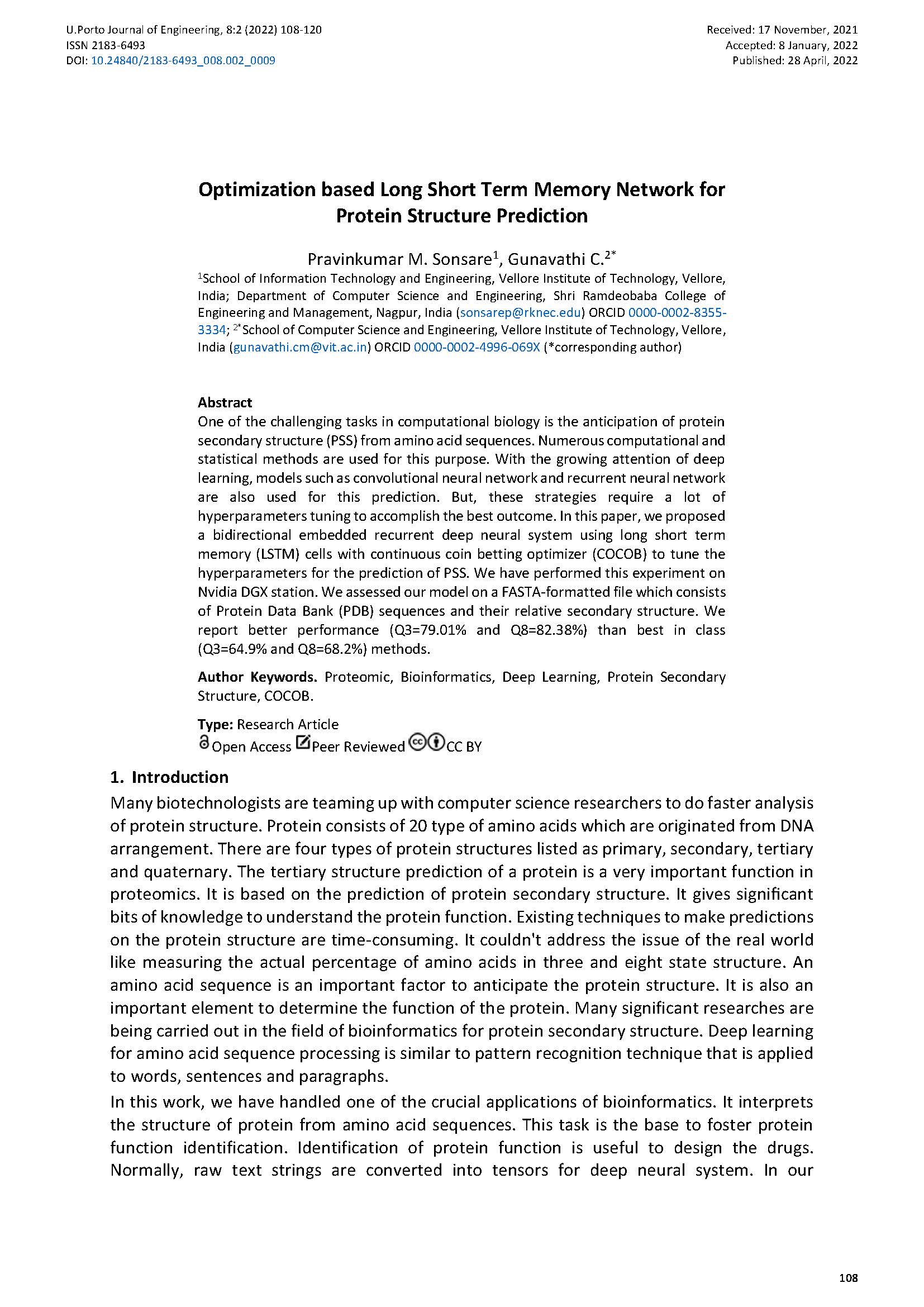Optimization based Long Short Term Memory Network for Protein Structure Prediction
Main Article Content
Abstract
One of the challenging tasks in computational biology is the anticipation of protein secondary structure (PSS) from amino acid sequences. Numerous computational and statistical methods are used for this purpose. With the growing attention of deep learning, models such as convolutional neural network and recurrent neural network are also used for this prediction. But, these strategies require a lot of hyperparameters tuning to accomplish the best outcome. In this paper, we proposed a bidirectional embedded recurrent deep neural system using long short term memory (LSTM) cells with continuous coin betting optimizer (COCOB) to tune the hyperparameters for the prediction of PSS. We have performed this experiment on Nvidia DGX station. We assessed our model on a FASTA-formatted file which consists of Protein Data Bank (PDB) sequences and their relative secondary structure. We report better performance (Q3=79.01% and Q8=82.38%) than best in class (Q3=64.9% and Q8=68.2%) methods.
Downloads
Article Details

This work is licensed under a Creative Commons Attribution 4.0 International License.
Authors who publish with this journal agree to the following terms:
- Authors retain copyright and grant the journal right of first publication with the work simultaneously licensed under a Creative Commons Attribution License that allows others to share the work with an acknowledgement of the work's authorship and initial publication in this journal.
- Authors grant the journal the rights to provide the article in all forms and media so the article can be used on the latest technology even after publication and ensure its long-term preservation.
- Authors are able to enter into separate, additional contractual arrangements for the non-exclusive distribution of the journal's published version of the work (e.g., post it to an institutional repository or publish it in a book), with an acknowledgement of its initial publication in this journal.
- Authors are permitted and encouraged to post their work online (e.g., in institutional repositories or on their website) prior to and during the submission process, as it can lead to productive exchanges, as well as earlier and greater citation of published work (See The Effect of Open Access).

